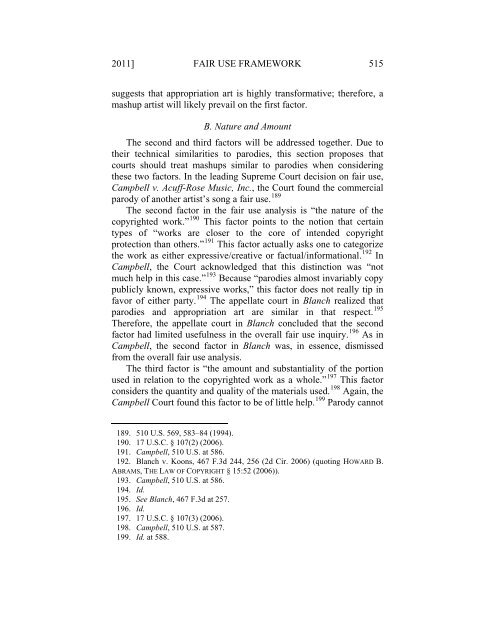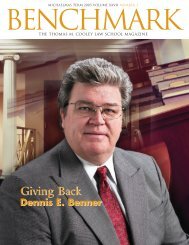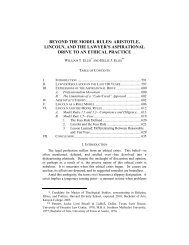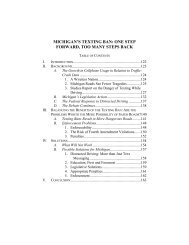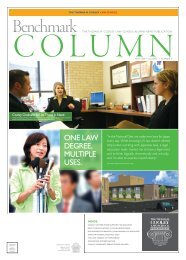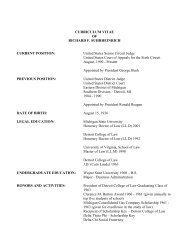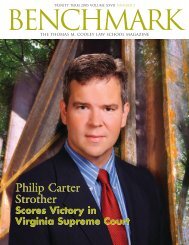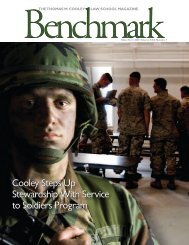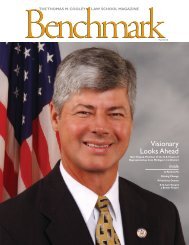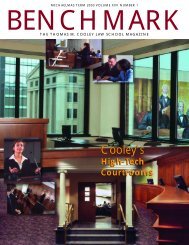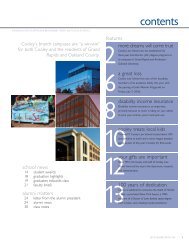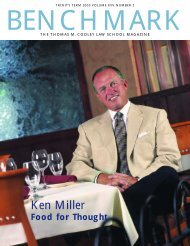Blanch It, Mix It, Mash It - Thomas M. Cooley Law School
Blanch It, Mix It, Mash It - Thomas M. Cooley Law School
Blanch It, Mix It, Mash It - Thomas M. Cooley Law School
You also want an ePaper? Increase the reach of your titles
YUMPU automatically turns print PDFs into web optimized ePapers that Google loves.
2011] FAIR USE FRAMEWORK 515<br />
suggests that appropriation art is highly transformative; therefore, a<br />
mashup artist will likely prevail on the first factor.<br />
B. Nature and Amount<br />
The second and third factors will be addressed together. Due to<br />
their technical similarities to parodies, this section proposes that<br />
courts should treat mashups similar to parodies when considering<br />
these two factors. In the leading Supreme Court decision on fair use,<br />
Campbell v. Acuff-Rose Music, Inc., the Court found the commercial<br />
parody of another artist’s song a fair use. 189<br />
The second factor in the fair use analysis is “the nature of the<br />
copyrighted work.” 190 This factor points to the notion that certain<br />
types of “works are closer to the core of intended copyright<br />
protection than others.” 191 This factor actually asks one to categorize<br />
the work as either expressive/creative or factual/informational. 192 In<br />
Campbell, the Court acknowledged that this distinction was “not<br />
much help in this case.” 193 Because “parodies almost invariably copy<br />
publicly known, expressive works,” this factor does not really tip in<br />
favor of either party. 194 The appellate court in <strong>Blanch</strong> realized that<br />
parodies and appropriation art are similar in that respect. 195<br />
Therefore, the appellate court in <strong>Blanch</strong> concluded that the second<br />
factor had limited usefulness in the overall fair use inquiry. 196 As in<br />
Campbell, the second factor in <strong>Blanch</strong> was, in essence, dismissed<br />
from the overall fair use analysis.<br />
The third factor is “the amount and substantiality of the portion<br />
used in relation to the copyrighted work as a whole.” 197 This factor<br />
considers the quantity and quality of the materials used. 198 Again, the<br />
Campbell Court found this factor to be of little help. 199 Parody cannot<br />
189. 510 U.S. 569, 583–84 (1994).<br />
190. 17 U.S.C. § 107(2) (2006).<br />
191. Campbell, 510 U.S. at 586.<br />
192. <strong>Blanch</strong> v. Koons, 467 F.3d 244, 256 (2d Cir. 2006) (quoting HOWARD B.<br />
ABRAMS, THE LAW OF COPYRIGHT § 15:52 (2006)).<br />
193. Campbell, 510 U.S. at 586.<br />
194. Id.<br />
195. See <strong>Blanch</strong>, 467 F.3d at 257.<br />
196. Id.<br />
197. 17 U.S.C. § 107(3) (2006).<br />
198. Campbell, 510 U.S. at 587.<br />
199. Id. at 588.


